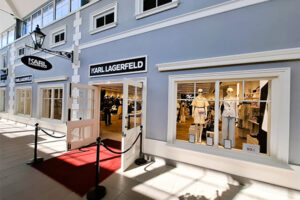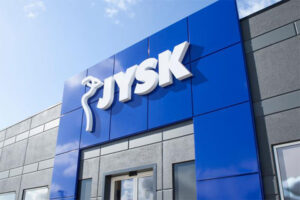By Thomas Maria Seikmann
The main mistake involves positioning the property as a center to satisfy demand. While this still works for many retail properties, it does not work for outlets. Their character has long been that of sparkling reconstructed holiday worlds, and they serve as destinations for excursions and leisure activities, with event and entertainment features. In addition to offering the corresponding gastronomy, unique events are also included.
Other mistakes relate to the bad appearance of individual brands. Multi-brand stores and franchise concepts do not succeed in meeting the very high quality standards that have been established in the outlet business. The era of faulty goods and remnants of recent years has long passed for target groups that do not normally constitute the clientele of the respective brands.
The outlet has reached the highest standard of product presentation. The latest shop outfits are just as important as highly trained staff and 1A goods that are still available at full price or were available at full price at least a few months ago. These requirements are only met by brands that are directly operated by the international headquarters. The underestimation of the importance of location and visibility accounts for the next mistake.
Given the supraregional catchment area, good connectivity and accessibility are indispensable. If this is not guaranteed in advance, at a minimum, massive advertising must be carried out via the access roads from the highway exit. Not least, presence in social media as well as testimonials in lifestyle and celebrity formats must emphasize the relevant of outlet centers.
The very small outlet community is often underestimated: Operating just one center is simply not enough. If the above conditions are not met, outlets will be of no interest to the most important of all factors, namely, popular tenants/brands.
Examples of successful redevelopments that originated from a difficult position include Freeport Fashion Outlet on the Czech-Austrian border and Parndorf Fashion Outlet, which is part of the largest outlet region in Europe.
For a long time, the Freeport outlet was in a slumber, with purely turnover leasing, an appearance resembling that of shopping centers from the last millennium, a dark, wooden ceiling along with orange and red facades, cumbersome access roads, old shop designs, stagnating visitor numbers, and declining turnover figures.
An all-around refit in an opulent regional style, with a ceiling reminiscent of Caesars Palace in Las Vegas, has attracted new international brands to the center. Facades with Art Nouveau elements in gold and white provided the framework for an upgrade in the tenant structure. The existing shops contributed to the new concept and repositioning and invested a total of several million euros into renovating their shops with the latest shop concepts.
Accompanied by a marketing strategy geared toward the new standard, along with stylish testimonials, the center has been able to win new top tenants and has significantly increased sales. This wave of success has also made the renegotiation of leases possible, thereby making them attractive for both sides in the long term.
Originally known as Villaggio, Parndorf Fashion Outlet was built in a modern style next to McArthurGlen Outlet in Parndorf. Customers were always confused by the different component appearances. As a result of having different owners, the pedestrian connection between the two outlets was not very customer-friendly.
The first step entailed the acquisition of part of the center from the neighbor, which made the connection of the building structures possible, thereby creating an optimal pathway for customers. In addition, coordination with the neighboring outlet regarding joint late-night shopping and a parking guidance system for the benefit of joint customers was achieved.
The second major issue centered around the creation of a completely different appearance for the shopping center and a specialized, market-like outdoor area. This was achieved through the introduction of facades and new exterior cladding for the indoor building in the Viennese Art Nouveau style. Now, the entire complex is characterized by five new entrances, each with a golden dome that serves as a landmark that can be seen from afar.
The center has been massively upgraded and now shines in its opulent gold and white design. The redevelopment is accompanied by social media and entertainment-based marketing, which produces content for the media that includes more than just the bargain paradise message. Events include the Miss Burgenland contest or artistic bungee jumping, during which pictures are painted during free fall and ticket holders may take a plunge themselves.
These successful redevelopment tool require not so much the structures of large operators, but intensive and sensitive handling of very special and distinct project issues as well as the financial means available. The need for this creative know-how will increase in the future, as online competition will become more and more widespread and the demand for products that emphasize excursion and leisure activities will increase. In the future, as demand increases, we will become even more specialized with regard to these changes and the resulting problems.
Sign up for our ACROSS Newsletter. Subscribe to ACROSS Magazine.





